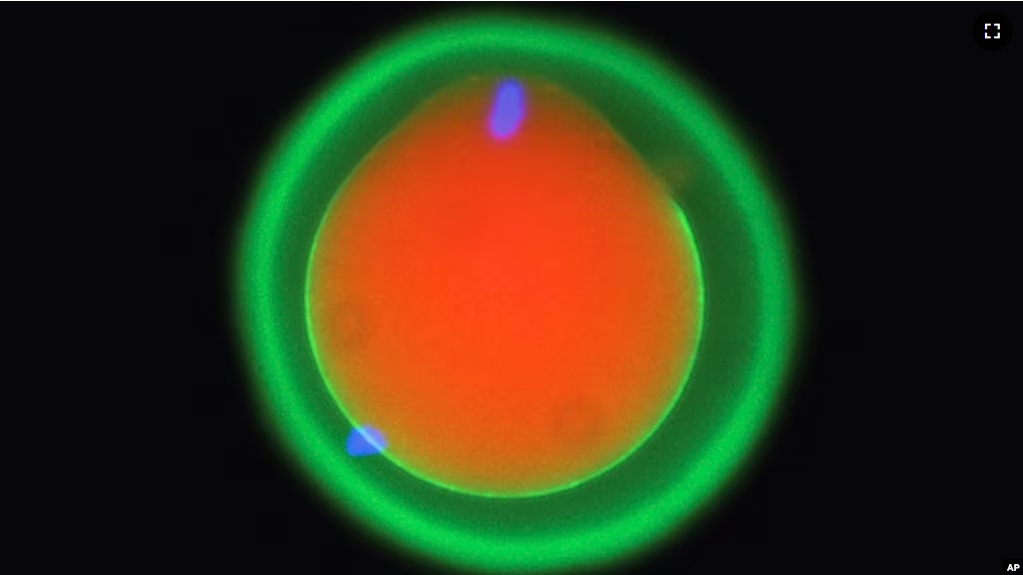How a sperm and an egg come together has long been a mystery.
Now, new research by scientists in Austria provides interesting insight. It shows that fertilization works like a lock and key in animals that have a backbone — from fish to people. Such animals are called vertebrates.
“We discovered this mechanism that’s really fundamental across all vertebrates as far as we can tell,” said co-author Andrea Pauli. He spoke to the Associated Press from the Research Institute of Molecular Pathology in Vienna, Austria.
The team found that three proteins in sperm join to form a sort of key that unlocks the egg. The process permits the sperm to attach to the egg.
The research findings come from studies in zebrafish, mice, and human cells. They show how this process has continued over millions of years of evolution.
The findings appear in the science magazine, Cell.
Scientists already knew about two proteins — one on the surface of the sperm and another in the tissue of the egg. Working with an international team, Pauli’s lab used Google DeepMind’s artificial intelligence tool AlphaFold to help them find and identify a new protein. The protein permits the first molecular connection between sperm and egg.
The developers of AlphaFold won a Nobel Prize earlier this month.
However, what the researchers did not know until now was how the proteins worked together as a team to get the sperm and egg to recognize each other, Pauli said.
Scientists still do not know how the sperm gets inside the egg after it attaches. They say they hope to explore that next.
Pauli said such research could help other scientists understand infertility better or develop new birth control methods, also called contraceptives.
The work provides targets for the development of male contraceptives said David Greenstein in an email to AP. Greenstein is a genetics and cell biology expert at the University of Minnesota and was not involved in the study. The latest study also highlights the importance of this year’s Nobel Prize in chemistry, he said in the email.
I’m Anna Matteo.
Laura Ungar reported this story for the Associated Press. Anna Matteo adapted it for VOA Learning English.
_____________________________________________
Words in This Story
lock – n. a fastening (as for a door) in which a bolt is operated (as by a key)
key – n. a usually metal instrument that is used to open a lock or to start or access a mechanism
mechanism – n. a process, technique, or system for achieving a result
fundamental – adj. serving as a basis supporting existence or determining essential structure or function
evolution – n. the process by which new species or populations of living things develop from preexisting forms through successive generations
